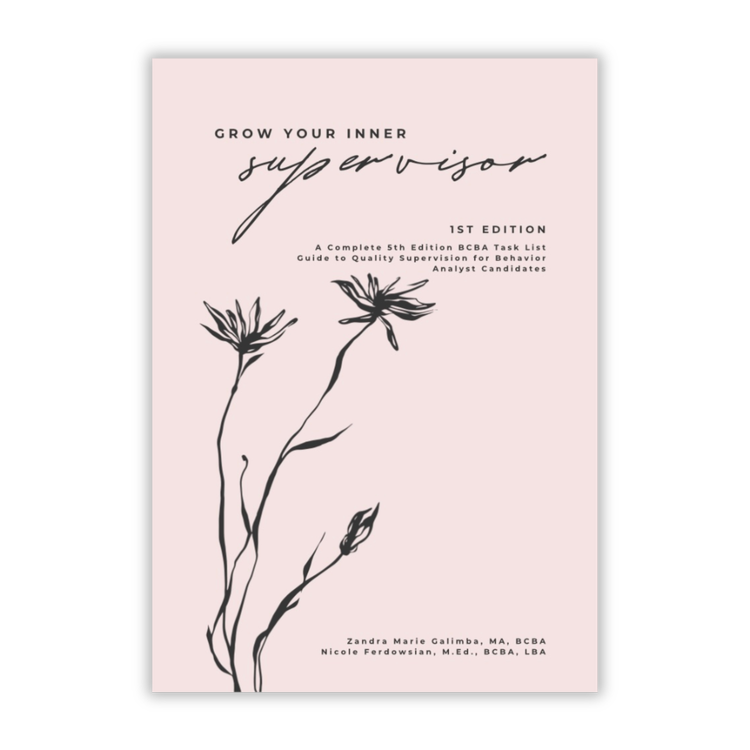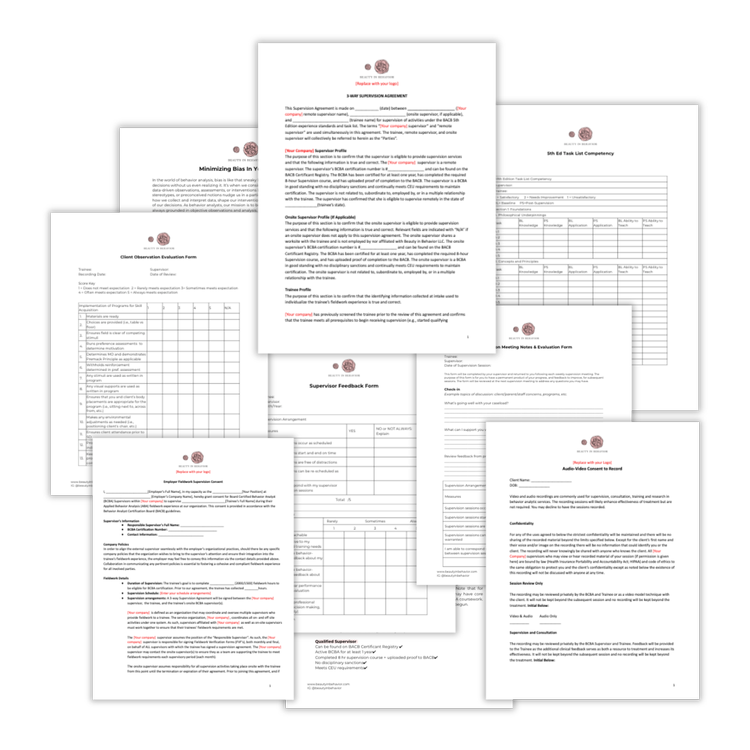
Hey fellow parents and behavior science enthusiasts! As a behavior analyst, I’m constantly amazed by how the principles of behavior analysis show up in daily life—even during the chaos of Black Friday and Cyber Monday shopping. If you’ve ever wondered why people would bother lining up at midnight for a deal or spend hours scrolling through online sales, behavior science has the answers. Black Friday is essentially a giant case study in applied behavior analysis (ABA)—I’ll break down how so in this post.
What is ABA?
Applied Behavior Analysis (ABA) is the study of how behavior is influenced by the environment, including what happens before and after an action. By understanding these relationships, we can predict, teach, and shape behaviors to achieve meaningful outcomes. While ABA is often used to help individuals build skills or manage challenges, its principles apply to a wide range of human behaviors—including consumer behavior.
Black Friday: A Case Study in Consumer Behavior
1. Reinforcement and Rewards
Shoppers are driven by reinforcers—those big discounts, limited-time deals, and doorbusters. These deals act as signals that reinforcement is available, rewarding behaviors like browsing, waiting in line, and making purchases. Retailers use these strategies to encourage shopping behavior and increase the likelihood that customers will participate in future sales or will become repeat customers even outside of sales.
Just like in ABA services, where desired behaviors are reinforced to increase their occurrence, Black Friday shopping thrives on the same principle. Deals and discounts serve as powerful rewards to those who find value in the retailers’ goods, driving people to engage in behaviors they might not otherwise—like waking up early, braving crowds, or buying items they hadn’t planned to purchase.
2. Schedules of Reinforcement
Limited-time offers and “while supplies last” deals—that’s intermittent reinforcement at work. Intermittent reinforcement occurs when rewards are given unpredictably, rather than every time a behavior happens. It’s a strategy we use in ABA to create strong, persistent behaviors—and retailers have mastered it.
Shoppers don’t know which items will sell out quickly or when the best deals will appear. This unpredictability keeps them engaged, motivated to keep shopping, and eager to find the next reward. Much like intermittent reinforcement keeps behaviors like gambling or checking your phone strong, it fuels the Black Friday frenzy.
3. Social Influence
Humans are naturally influenced by observing the actions of others, something we behavior analysts refer to as modeled behavior. On Black Friday, shoppers see others lining up outside stores or rushing to grab deals, posting their shopping experience and/or purchases on social media, and this behavior becomes a cue for others to act similarly in order to gain similar outcomes, if they too find value in those outcomes.
For example, seeing others eagerly participate in sales at Best Buy may create the message: “I need to line up so I can get a discounted flat screen like everyone else.” This observation prompts shoppers to join in, not wanting to miss out on what appears to be behaviors that have a valuable outcome. This effect is amplified by retailers who strategically highlight busy stores and excited customers in advertisements to support the idea that shopping is the “right” behavior to engage in to receive X reward or experience.
4. Antecedents and Triggers
In ABA, antecedents are the events or environmental factors that happen before a behavior, setting the stage for it to occur. On Black Friday, stores carefully design their space to maximize buying behavior.
From strategically placed sale signs to brightly colored “70% off” tags, every detail is planned to catch attention and prompt action. Add festive decorations, holiday music, and pleasant scents, and you’ve created a welcoming environment that encourages shoppers to linger and spend. These antecedents act as triggers, making it easier for shoppers to engage in purchasing behaviors without much deliberation.
5. Motivating Operations (MOs)
Motivating operations temporarily increase or decrease the effectiveness of a reinforcer, influencing behavior. Black Friday is a goldmine of MOs.
• Establishing Operations: The buildup of excitement through ads and social media increases the perceived value of discounted items. Scarcity—like “only 10 left in stock”—makes those items even more desirable. Think, when you are hungry you are in a state of deprivation, so you are more likely to engage in eating behavior then to fill your stomach.
• Abolishing Operations: Long lines, crowded stores, and shopping fatigue might decrease the appeal of continued shopping, especially when having experienced much of them already in the day. Think, when you engage in eating behavior, the appeal to continue eventually decreases because you are full.
Making the Connection
Black Friday and Cyber Monday aren’t just about deals—it’s a fascinating example of how ABA principles shape consumer behavior. Reinforcement schedules, social influence, and motivating operations all come together to create the perfect storm of holiday shopping habits.
Cheers to understanding behavior, one shopping spree at a time! Happy shopping, and don’t forget to subscribe for your weekly dose of science and parenthood.
Speaking of sales, today is the last day that my shop items will be 25% off when you use the code EMAILLIST25 at checkout! Get your digital downloads and behavior themed apparel before 11:59pm pst tonight (11/2/2024) at beautyinbehavior.com/shop.
Best Sellers:
"Grow Your Inner Supervisor" - Ebook
(Recommended for trainees planning to sit for the exam BEFORE January 2025)
Calling all behavior analyst supervisors and trainees! Our "Complete 5th Edition BCBA Task List Guide to Quality Supervision" isn't just an indispensable tool for behavior analyst candidates; it's your secret weapon for elevating your supervisory approach. Crafted with the dual purpose of aiding candidates and empowering supervisors, this guide is a comprehensive resource that fosters a symbiotic relationship between supervisor and trainee.
For Supervisors:
Guidance at Your Fingertips: Streamline your supervisory process with detailed insights into best practices. Our guide provides supervisors with a roadmap to effective supervision, ensuring that you can guide your candidates with confidence.
Structured Supervision Framework: Leverage a structured framework that aligns with the 5th Edition BCBA Task List. This allows supervisors to tailor their approach to meet the evolving needs of candidates, providing a cohesive and targeted learning experience.
Professional Development Support: Elevate your own skills as a supervisor with resources designed to enhance your professional development. Stay informed about the latest trends and methodologies within behavior analysis, positioning yourself as a leader in the field.
Problem-Solving Tools: Encounter a challenging situation? Our guide equips you with problem-solving tools derived from real-world scenarios. Tackle issues head-on and nurture a supportive learning environment for your trainees.
For Trainees:
Supervision Transparency: Understand the expectations and objectives of your supervision journey. This guide demystifies the supervision process, allowing candidates to actively engage in their own professional development.
Effective Communication Strategies: Learn how to communicate effectively with your supervisor. The guide provides insights into fostering open and collaborative communication, creating a positive and productive supervision experience.
Feedback that Fuels Growth: Explore strategies for receiving and implementing feedback. Transform constructive criticism into opportunities for growth, ensuring that your journey to BCBA certification is not only successful but also personally enriching.
Unleash the full potential of your supervisory relationships with a resource that caters to both trainees and supervisors. The "Grow Your Inner Supervisor" is more than a guide; it's a catalyst for professional excellence for behavior analysts at every stage of their career.
Our text includes:
Fieldwork requirement guide
Behavior analytic professionalism “soft skills” activities
Task list checklist
Evaluation forms
Over 62 discussion prompts
Over 62 unrestricted activities
Minimizing Bias journal prompts
Supervision Docs Bundle
Our Supervision Docs Bundle is the comprehensive solution you've been searching for, providing you with all the essential documents needed to kickstart your journey as an independent remote supervisor. The bundle includes:
3-way Supervision Agreement Template
Audio-Video Consent Template
Employer Fieldwork Consent Template
Fieldwork Eligibility Guide for BCBA Certification
Onboarding Checklist
5th Edition Task List Competency Form
Pre-Supervision Reflection Worksheet
Minimizing Bias Worksheet
Client Observation Evaluation Form
Supervision Meeting Notes & Evaluation Form
Supervisor Feedback Form
Still Learning Sweater
We promote the idea that learning and growth is a life-long journey. Even after earning a series of degrees, credentials, and accolades—learning doesn’t stop. There is no such thing as a human that knows everything.
• Unisex
• 50% cotton, 50% polyester
• Pre-shrunk
• Classic fit
• 1x1 athletic rib knit collar with spandex
• Air-jet spun yarn with a soft feel and reduced pilling
• Double-needle stitched collar, shoulders, armholes, cuffs, and hem
Like what you read?
👩💻Learn about our resources and remote supervision, consultation, and parent coaching services at www.beautyinbehavior.com.
📱Follow our accounts @beautyinbehavior and @beautyinbehavior.parents on Instagram.
🔄Share our Substack with a friend, or take a screenshot of a post and tag us on your socials!





Happy to find another BCBA on Substack! I enjoyed reading about this application of behavior analysis.